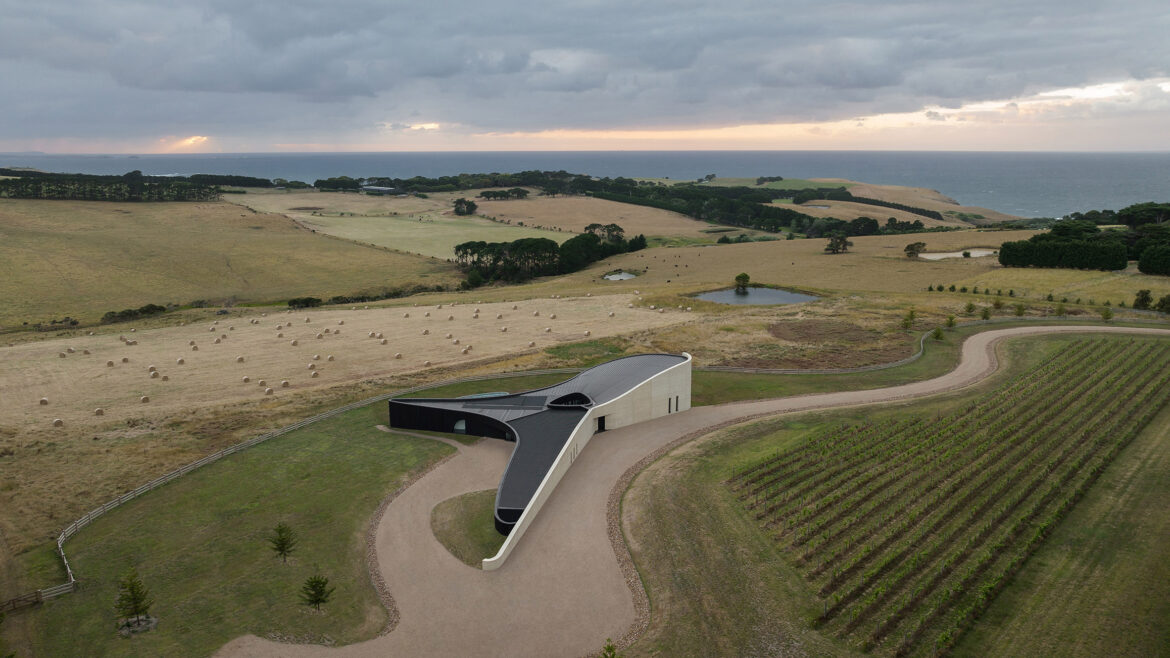Australia has some mighty majestic coastline and properties found along it are often amongst the most visually impressive and impactful and that’s something that can be applied to Peninsula House from architecture studio, Wood Marsh. Curved walls of charred timber and rammed earth have been utilised to construct this residence south of Melbourne, specifically designed to mirror the windswept nature of Australia’s coastline.
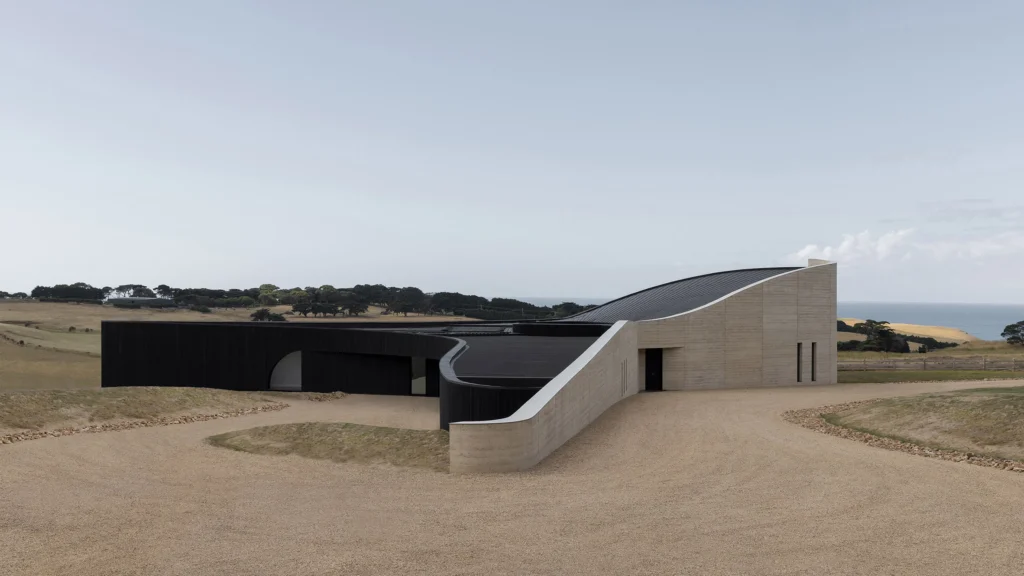
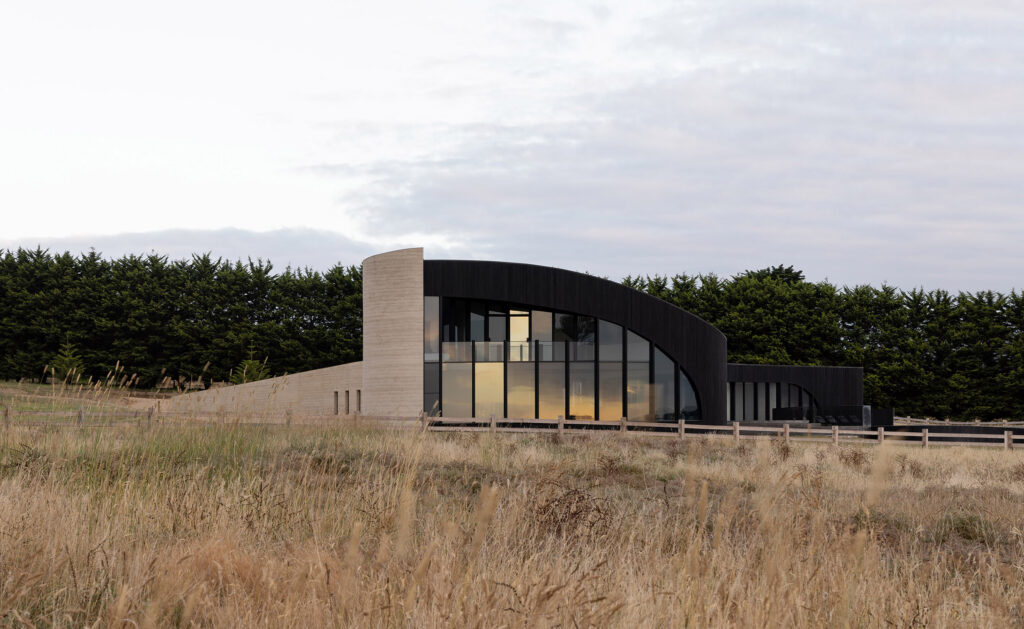
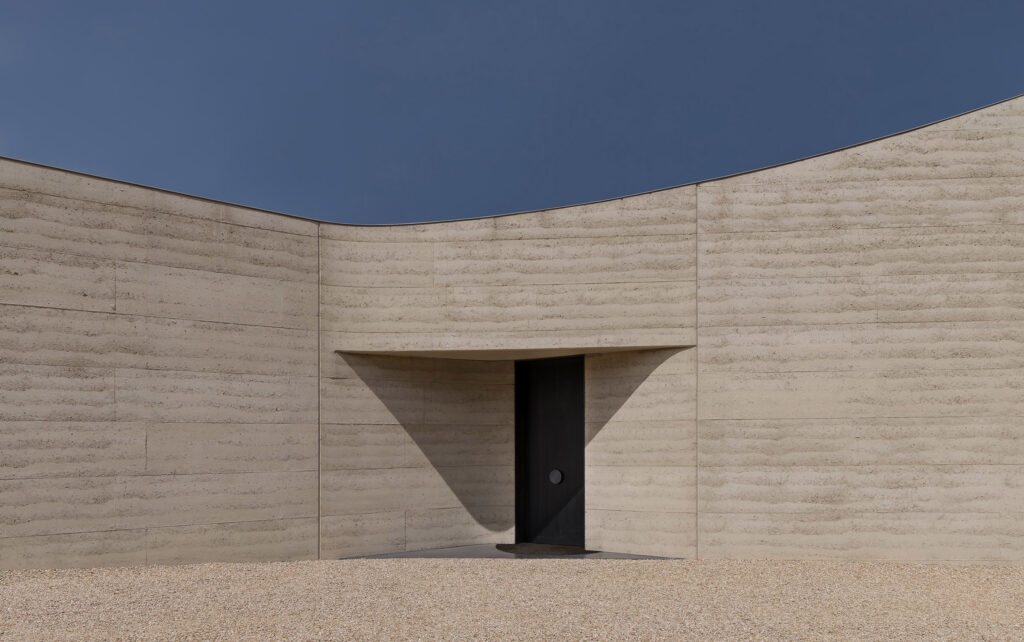
Named Peninsula House, this home is situated near the small town of Flinders, offering views of the Bass Strait and nestled amidst farmland, this is one idyllic piece of architecture. Wood Marsh drew inspiration from the coastline’s contours and the winding paths to the site, opting against a conventional orthogonal structure. The result is a home with a sinuous shape, featuring elongated “arms” that encircle a driveway and a terrace with a swimming pool.
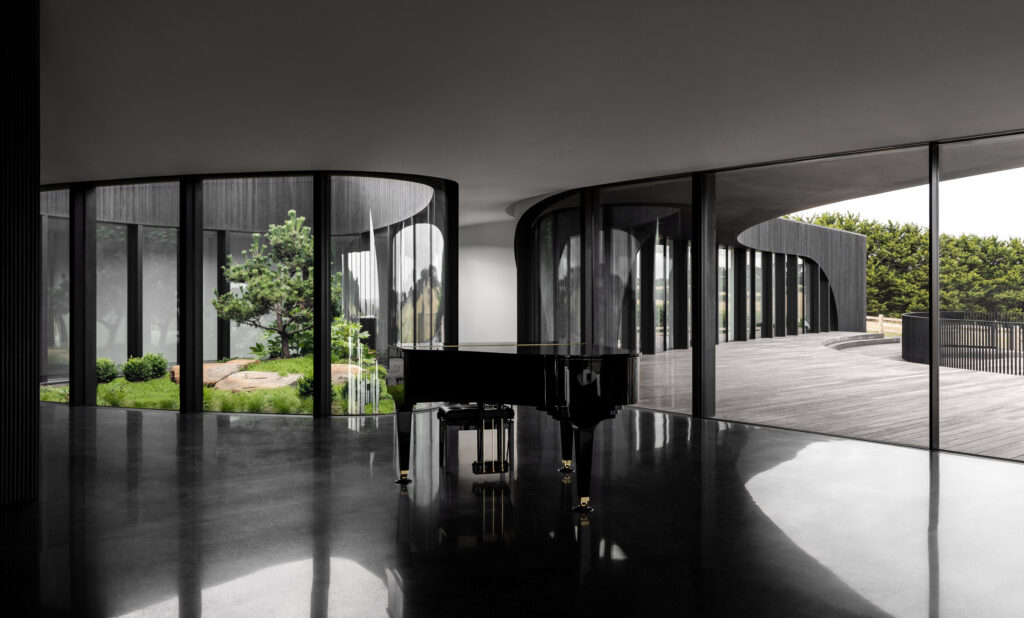
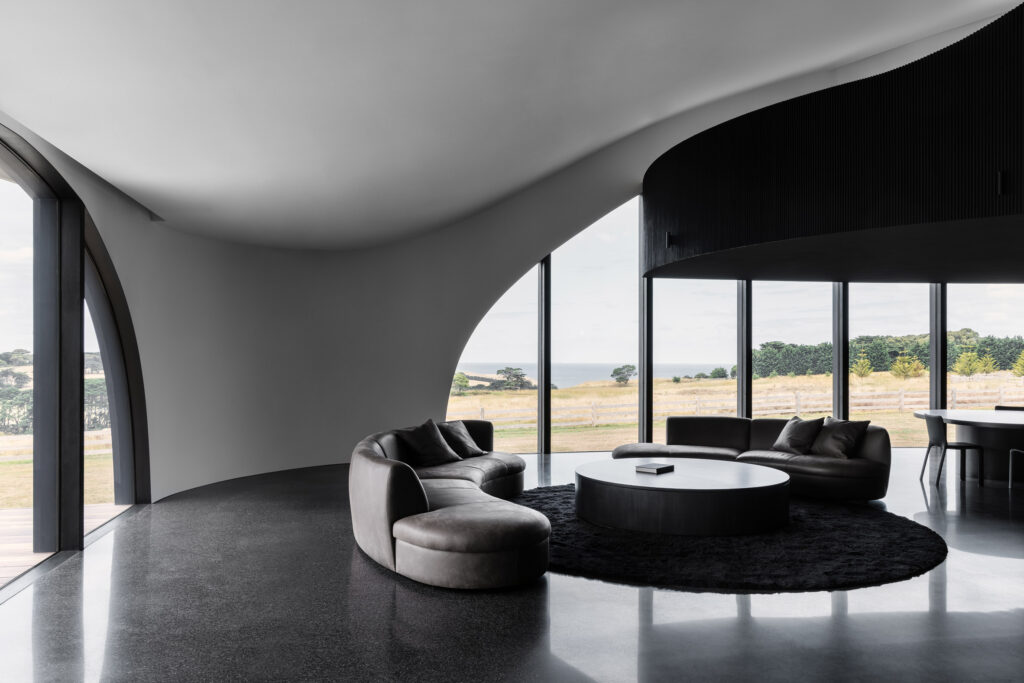
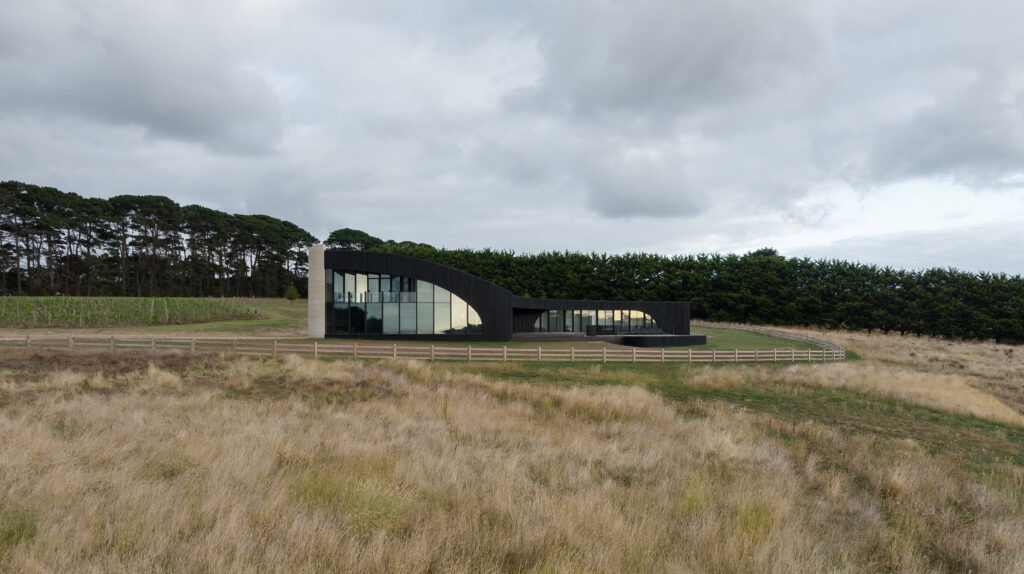
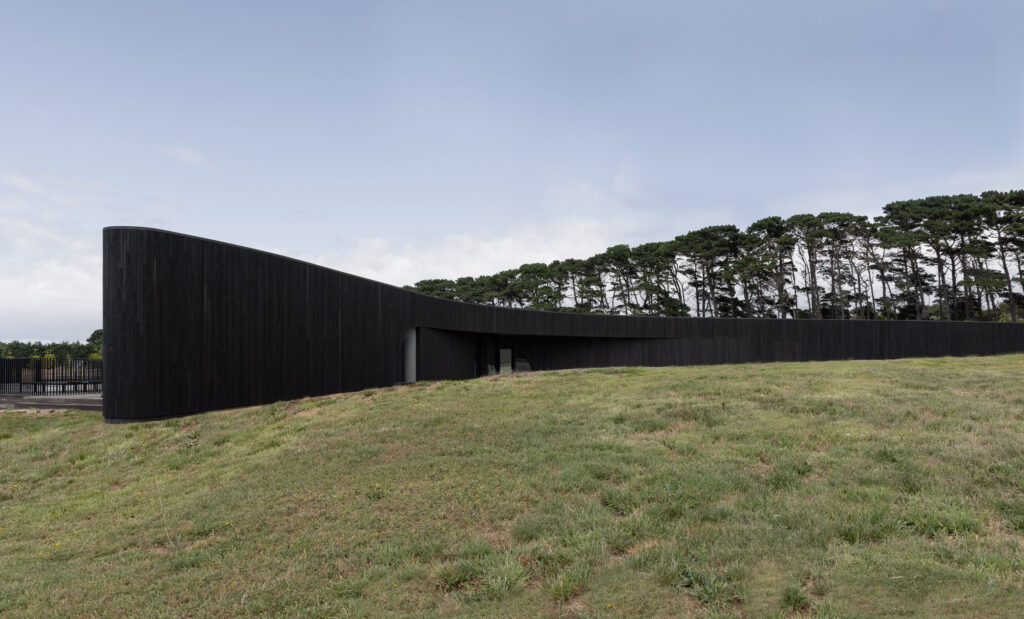
Upon entering Peninsula House, visitors are welcomed into an atrium centred around a quaint courtyard enveloped in full-height glass. This space is accentuated with vibrant greenery, standing in stark contrast to the monochrome theme of the interiors and the natural outdoor setting. The architectural design from the team at Wood Marsh Studio cleverly exposes sections of the home’s rammed-earth walls, integrating the building’s structure into its aesthetic appeal.
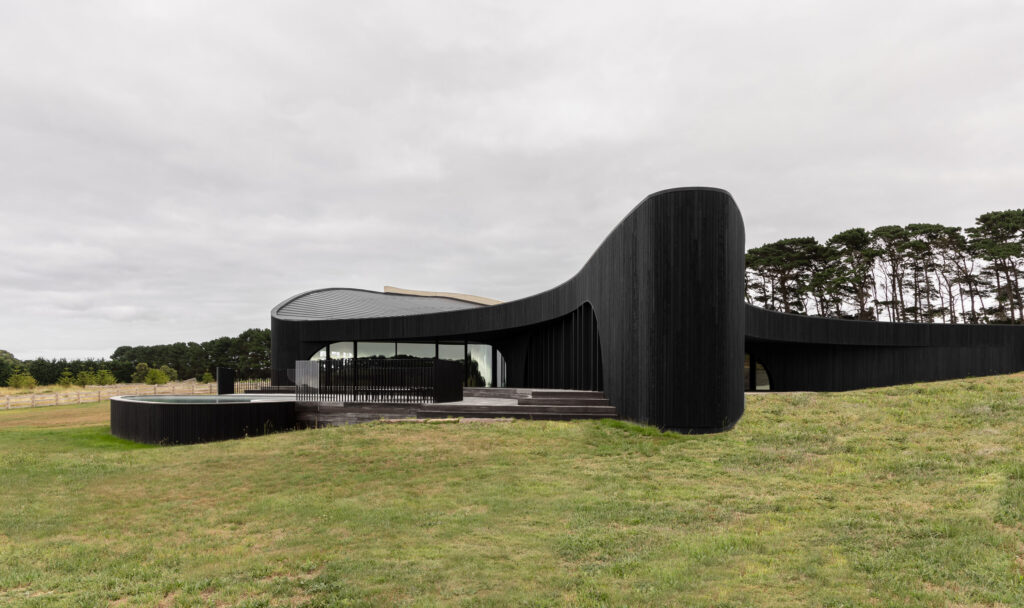
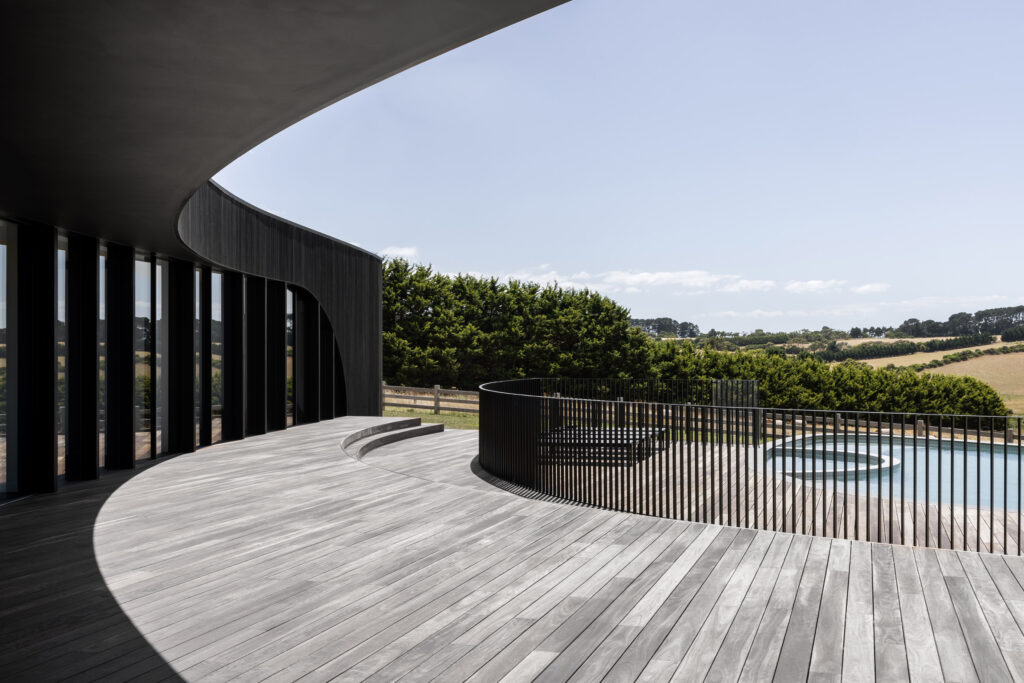

Just south of the central courtyard lies a spacious double-height area that encompasses the living room, kitchen, and dining space. This area offers stunning views of the eastern terrace and surrounding landscape through expansive windows and from a balcony on the first floor. Corridors extend towards the bedrooms and recreational spaces situated in the home’s slender wings, featuring a specially designed recording studio to the north.
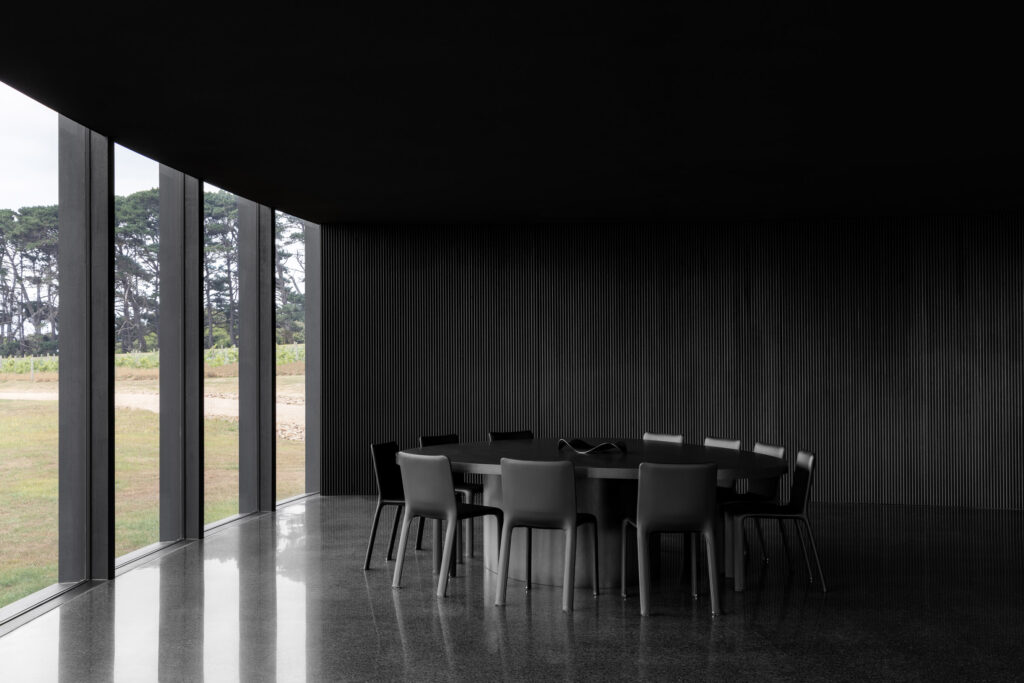
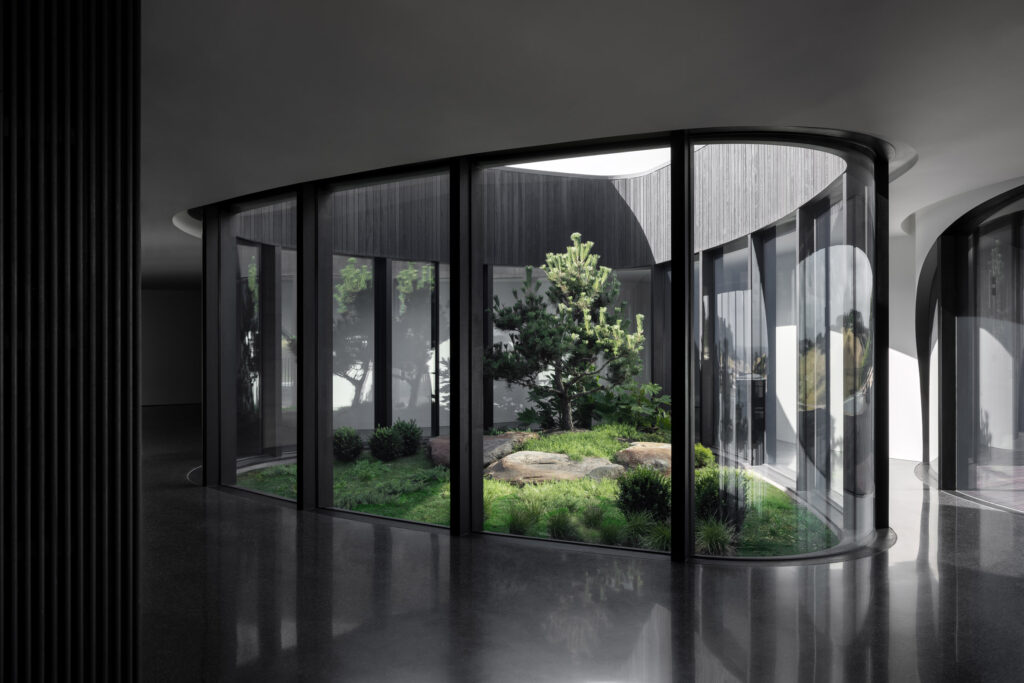
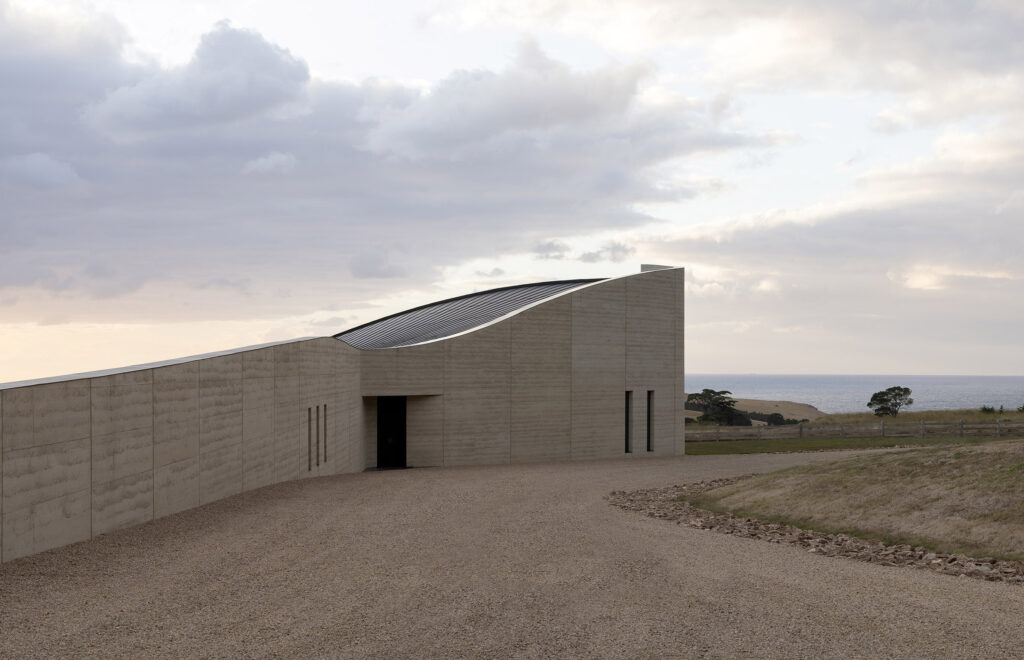
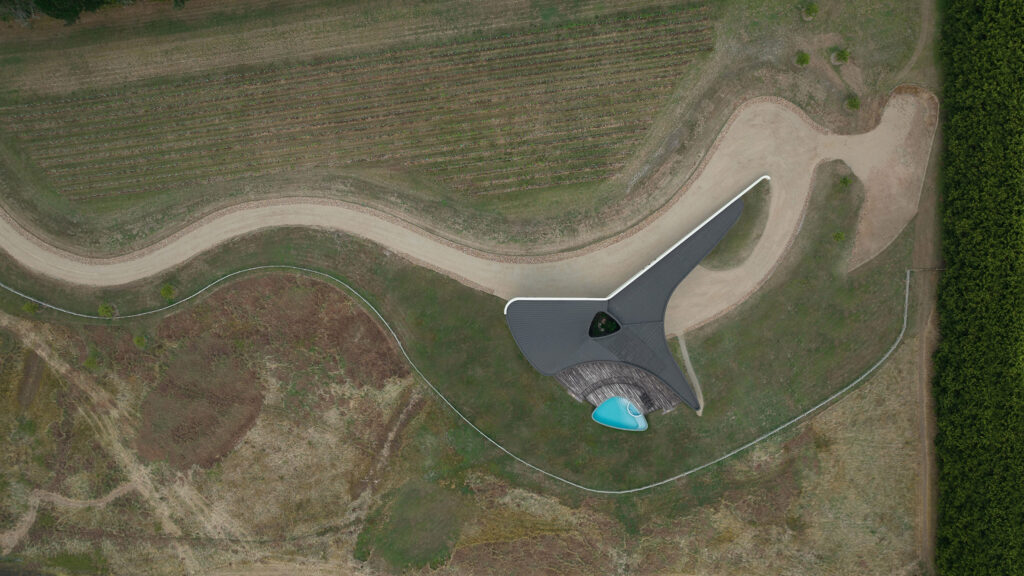
The interior is marked by dark stone flooring, black wooden panels, and black tiles in the bathrooms, mirroring the exterior’s charred timber aesthetic. This is balanced by white walls and ceilings, which introduce a sense of spaciousness and light into the living spaces. Another fine addition to Australia’s ever-growing list of striking, modern architecture.
- Rumpl Everywhere Mats - April 26, 2024
- Bang & Olufsen Beosystem 9000c CD Player - April 26, 2024
- Buckle & Band Milanese Stainless Steel Luxury Apple Watch Strap - April 26, 2024

